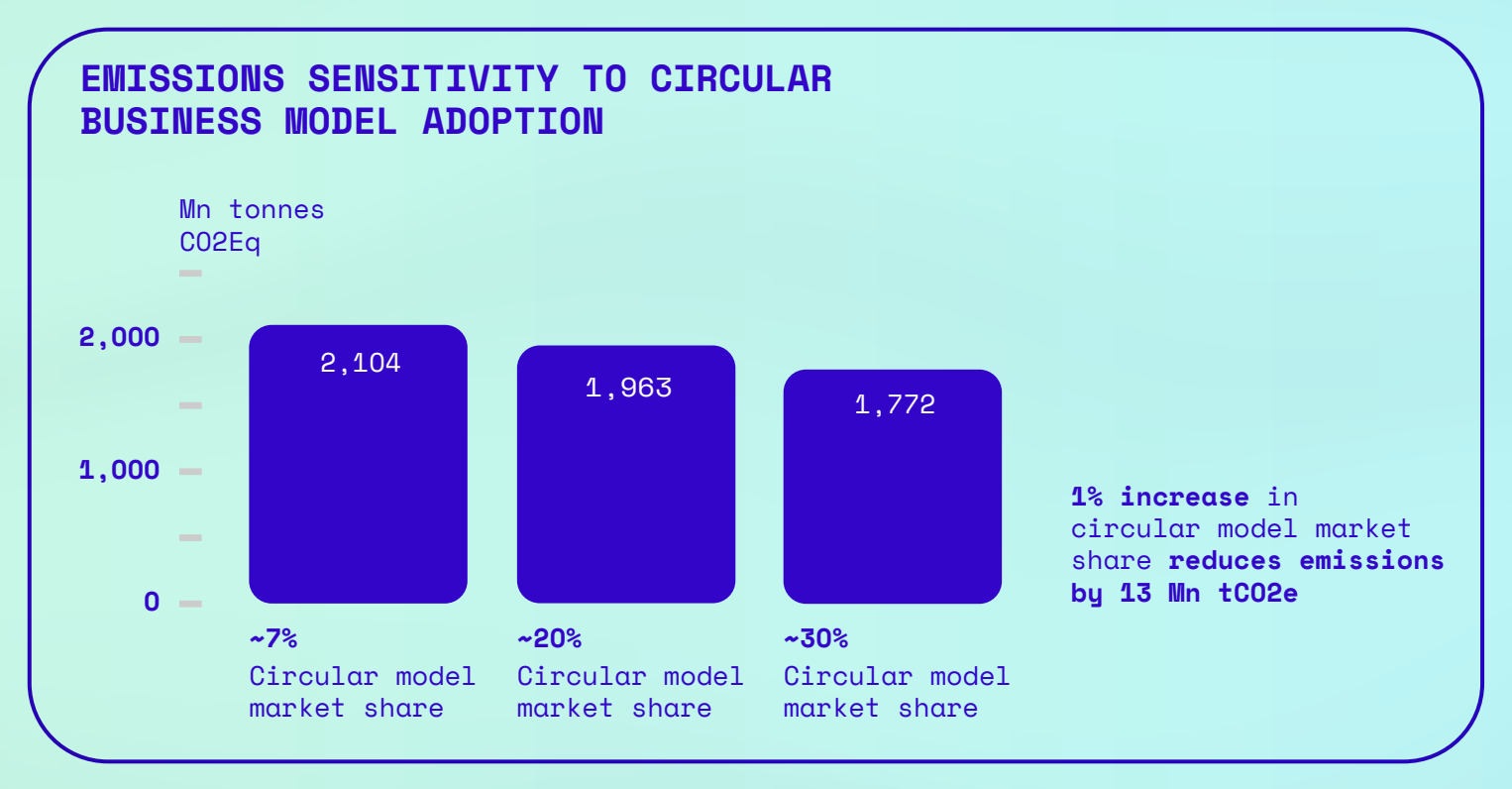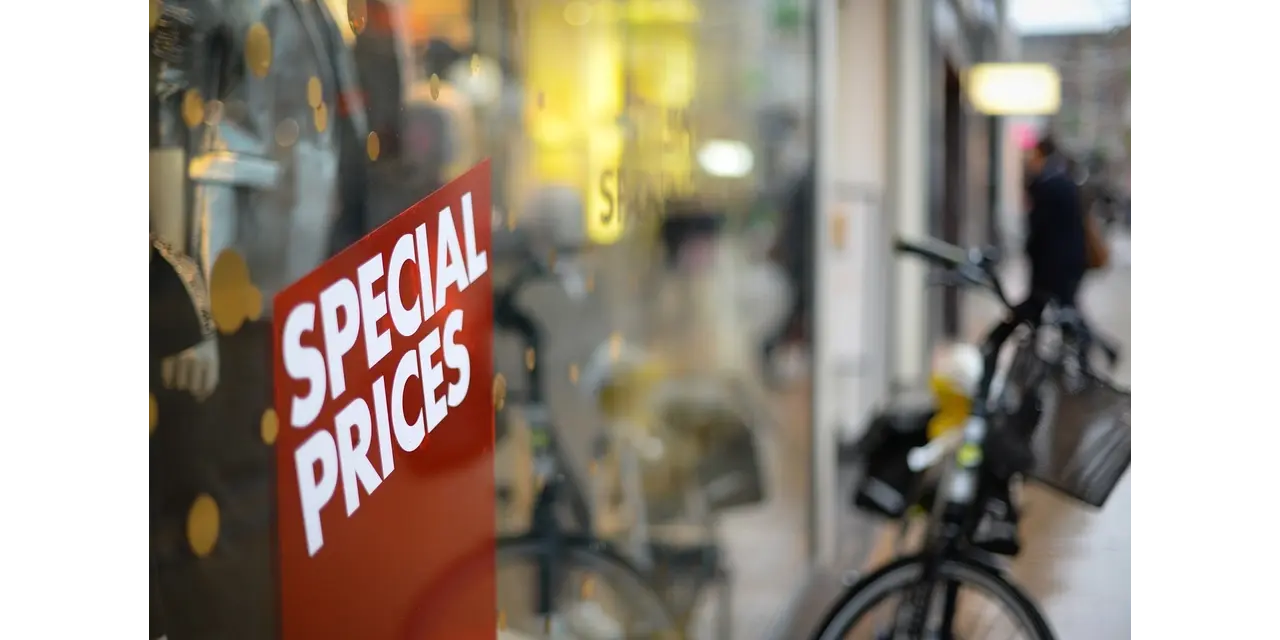In order to answer your request, we are obligated to process the data given above. Sometimes, however, we would like to use them for slightly different purposes, such as statistical data or informing you about our new products and services.We promise that we will use the given information for communication purposes only. We also remind you that you can unsubscribe from our mailing at any time (see Privacy Policy).
Is there one good way to follow the green business path while focusing on business growth?
Running a retail business is hard work - younger generations make buying decisions in a significantly different way than the older buyers; major retailers operating in the industry for over a decade, without a change in approach, may lose their position and find it difficult to retain loyal customers. One of the solutions to these problems is to... bet on the mentioned above green and sustainable e-sales - especially considering the fact that we are currently experiencing recommerce growth that is noticeable to the naked eye. It would be a real shame not to take advantage of the customer base need to buy in an eco-way.
There are a lot of things that go into going green brand approach, and there are many facets to get more sustainable. One of them is definitely above mentioned recommerce.
The recent rise in the sale of second-hand products is not only a bold and good step toward greener solutions and giving unnecessary products a second life. It is also an opportunity to declutter our homes, reorganize our closets and shelves and at the same time earn some money or buy things at a much lower price while achieving sustainability goals. No wonder consumers are eager to take advantage of this (re)opportunity, waging an effective war on waste and consumerism.
In today's post, we will check how useful is this approach - and if it is worth betting on it in your ecommerce development.
Recommerce market: the business green story
A recommerce program, sometimes also called reverse commerce, is the process of re-selling owned (new or used) items through online distribution channels. Mostly this kind of selling takes place in the fashion (high luxury items have particular potential - people on a budget who dream of luxury brands see this as a really practical way to make their dreams come true) and electronics industries.
Let's emphasize: that is not a new market - consumer-to-consumer reselling has existed almost since the beginning of the internet, influencing the popularity of eBay for example. What is new in the approach is modern digital solutions and resale on a mass scale as a matter of fact. And what's more, the brands themselves are also involved in these resales.
As shown by the data collected by ThredUp’s 2020 Fashion Resale Market Analysis, C2C ReCommerce, and B2B ReCommerce are expected to hit $64 billion dollars by 2024, compared to $28B a few years ago.
Staying on the topic of hard data, it is worth citing a few more statistics: Coresight Research forecasts that the recommerce market will grow even better - 20 times faster than the overall retail market and five times faster than the off-price market. Moreover, GlobalData estimates that the total global apparel market (resale and donations) will grow to $51 billion by 2023.
You have to admit that such high growth is impressive, and the market itself has huge potential.
The target group for this type of shopping is definitely the younger generation of consumers - Cushman & Wakefield in its report "Ecommerce is bursting at the seams, and warehouses with it" cites data that such purchases are most often made by the youngest consumers in the age group of 16-24 (81%) and 25-34 (80%) years old. Many studies indicate that young people are the fuel that drives recommerce platforms and resale programs - given the growing customer awareness considering the need to buy sustainable products produced from recyclable materials, traditional retail needs to take significant steps to attract new customers among the younger generation.
The perfect business model for the fashion industry
Greenpeace reports that over the past 15 years, global production in the hash industry has doubled, and in the last year alone... 12 billion items of clothing. The organization estimates that about 20% of this number will never be worn, and another lion's share will end up at the bottom of closets after 3 months of irregular wear.
Germany is ahead in these infamous statistics - in this country the average citizen buys 60 pieces of clothes per year. This is all the more sad news in the context of the trend for fast fashion - where brands offer up to ... 24 new collections a year. Second in line is the UK, where 13 million items of clothing are thrown away every day.
As you can see, taking care of the long life of products definitely helped many brands to solve the above-described problem.
Moreover, as the report prepared by the consulting firm McKinsey & Company and Global Fashion Agenda shows, each percentage point in the growth of the so-called circular economy allows saving 13 million tons of CO2 equivalent. The authors of the study forecast that the fashion industry's emissions will be reduced by 13 million tons of CO2 equivalent by 2030, which accounts for 8.5 percent of the total global emissions reduction planned.

Much has also changed in the attitudes of buyers - especially, as mentioned in the previous paragraph, young customers. Those entering their prime earning potential are already somewhat accustomed to the idea of sharing over owning in other industries, just to mention Uber or Airbnb. It seemed only a matter of time before this was rediscovered in the fashion industry.
The brands themselves also benefit from caring about environmental issues; besides the obvious positive associations with sustainable responsibility, the opportunity to sell previously owned items is a real win-win situation. Brands can sell out-of-stock, seasonal, or gently used products via special trusted apps, which we will describe in more detail in further part of the text (we know how important real-life examples are for you :) ).
Remember: betting on this kind of positive impact is not only about recouping some of your sales losses - but it's also about expanding your business to other consumer segments.
You will benefit from the retention of existing clients and increase customer loyalty. Some brands have dedicated programs (more on that shortly) that allow customers to return used merchandise in exchange for a discount on new purchases.
If you are not convinced - take inspiration from the real giants of the market. Last year, the Kering company (owner of popular established brands alike such as Gucci, Bottega Veneta, Alexander McQueen and Balenciaga) acquired a 5% stake in the French brand Vestiaire Collective, whose job is to find and authenticate used products and sell them on.
Of course, with a bet on re-commerce comes not only profits but also challenges. In fact, perhaps the most important of these is the need to deal supply chain issues and with returns, known also as reverse logistics.
A good way out of this situation is to work with a specialized company that can help you manage the problems associated with the last mile, reverse logistics or the storage of recovered goods before they are released to their new owner.
Note: in re-commerce program case you will also need to include specific additional services in the logistics: verifying that the items sent to the new owners are genuine, cleaning and repairing the items, ironing them in the case of clothing, etc.
For recommerce merchants that decide to deal with logistics as an in-house activity, a good option is to invest in a flexible order management system. Modern OMS systems allow to control almost every step of the (re)sale: from returns, to quality control, to the generation of notifications to customers and employees about the possibility to sell the item again.
Sustainable brands: real-life eco-friendliness examples
The recommerce market is a really great business model valued by the biggest market players - so let's see which (not only) fashion retailers have bet on developing their resale program.
One of the market-leading brands based on the circular business model is Trove. The brand provides its services to giant brands such as Nordstrom, Levi's, Eileen Fisher and REI. The company has also partnered with the famous Patagonia company - and together they have launched a digital store called Worn Wear, where you can return used Patagonia clothing and get your money back. Of course you can also buy second hand clothes of other users.
However, this is not the only sustainable effort made by this particular brand. Patagonia provides DIY guides for repairing damaged products and supports environmental causes with Patagonia ActionWorks.
An interesting initiative was taken 2 years ago by H&M when they took over the Sellply platform and created a dedicated website for selling second-hand goods of the COS brand (also belonging to the H&M structure).
Last May, on the other hand, the Zalando Wardrobe project was launched - a resale platform which included not only second-hand items, but also those that were ultimately never worn.
The company made it possible for customers to buy back used clothing at a price set in advance by the store or by the person selling it. In addition, a Zalando pre-owned service was launched, enhanced by free shipping and the ability to return purchases within 100 days of purchase. The seller can receive the funds as a Zalando gift card or make a donation to the Red Cross or WeForest.
In addition to the actions described above, the fashion industry is focusing on refurbishing goods. Some are doing it themselves (e.g. Nike through the Nike Refurbished option) and some are outsourcing it to certified partners, such as the startup Stuffstr, which offers a closed-loop service (collecting, recycling, refurbishing and reselling clothes).
As I mentioned in the introduction to this text, re-commerce is about the broader retail market, not just about the fashion industry - although it is by far the most popular in it.
Examples of such actions implemented by multiple industries include the following cases:
- Mattel has launched the Mattel PlayBack program, which lets you get new toys in exchange for sending back old toys to be recycled into new items;
- Decathlon focuses on resale of used products (equipment from expositions, after tests and get from returns). In France, where Decathlon originates, the chain has gone even further and also allows customers to resell previously purchased and used products under the Decathlon Occasion program. A used product for resale to a new buyer must be registered on the website and then taken to the store of your choice for a price quote. In return the selling party will receive a bank transfer or shopping voucher for the sporting goods store;
- Ikea has implemented a Circular Hub program, a recommerce space advertised as a bargain sale. It is a secondary market where furniture and accessories appear after being used as exhibition and products in packages with minor defects are sold at a significantly lower price. You can also return your unwanted Ikea furniture to us for a refund using your IKEA refund card. The furniture is of course resold under this program.
Conclusion
The recommerce initiatives growth take place in an incredibly fast pace - and there's really nothing to stop it. The world of retail is changing - not only has it become massively digitalised, but it is now turning towards sustainable development and eco-mindedness.
Circular initiatives and second hand market are on the real rise. People are taking more responsible purchasing decisions and willingly buy pre owned items. Sustainability credentials become the basis for satisfying customers of different age groups and building a customer base brand.
It's up to you, the retailer, to take the green steps demanded by your customers - and to take the direction you want to take your business in a competitive fashion industry as well. Remember: rise of recommerce is happening right now - so don't waste your time, set up your recommerce platform and start selling pre-owned items tomorrow to win a new group of younger consumers and to take care of gained before loyal customers.





